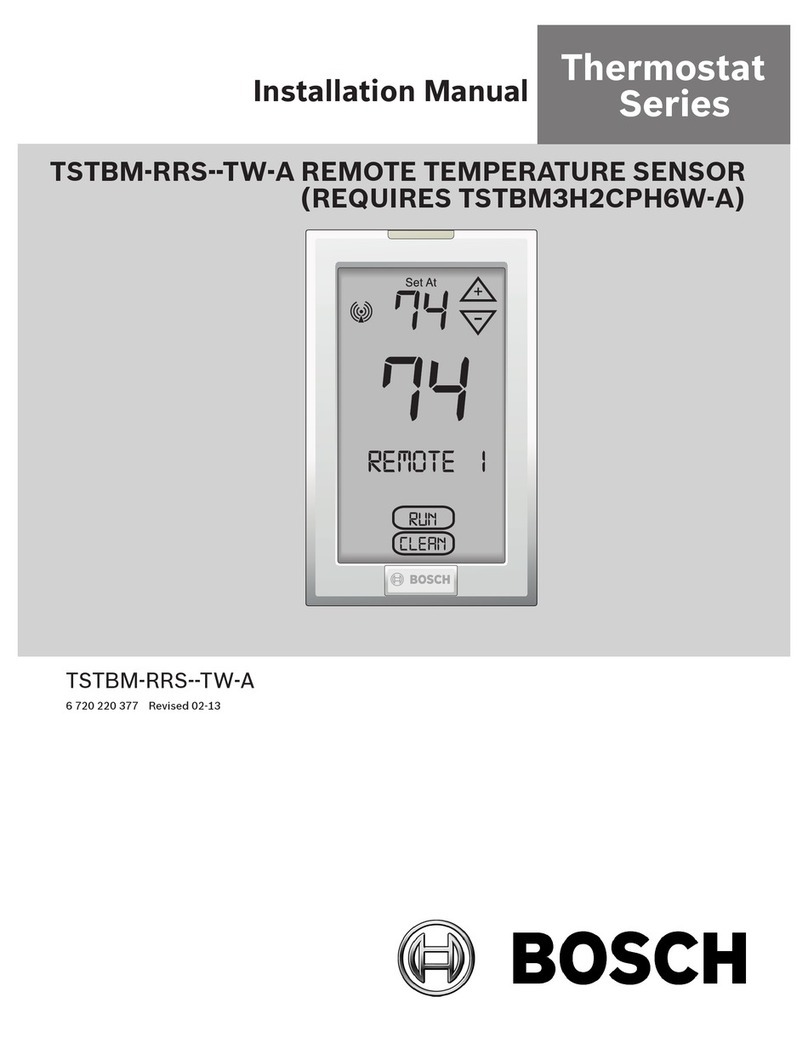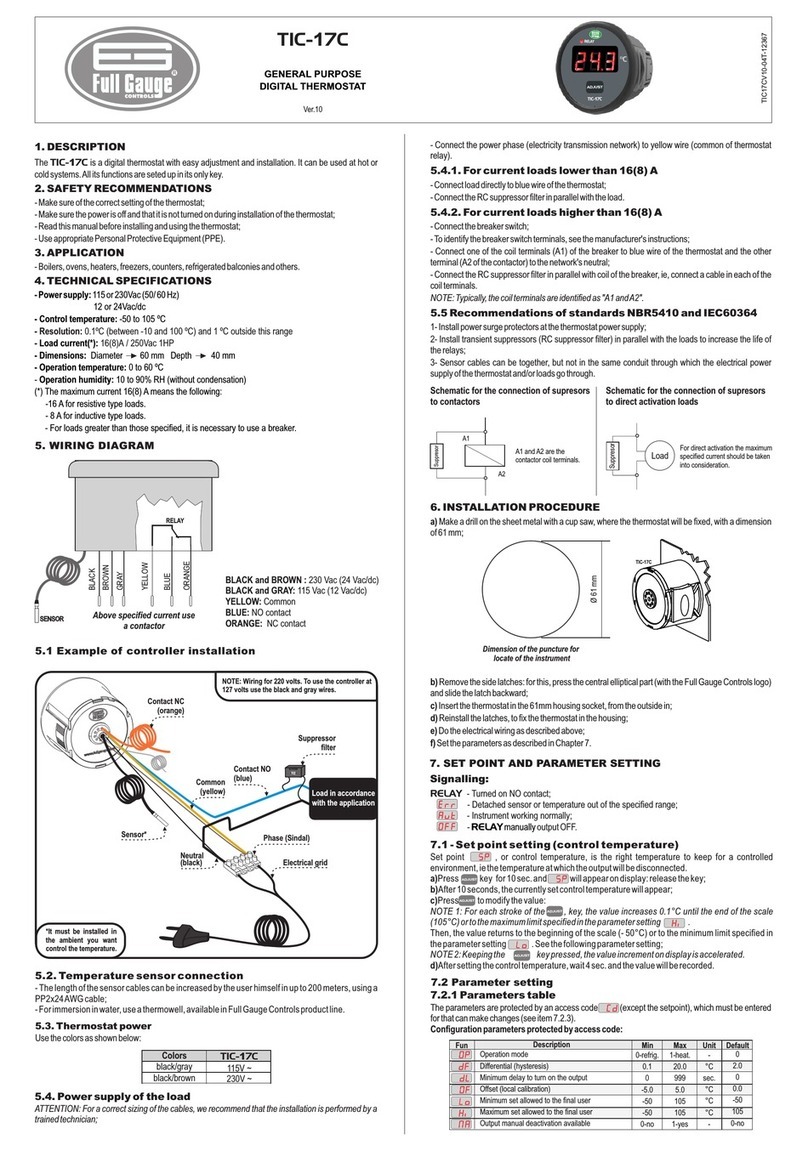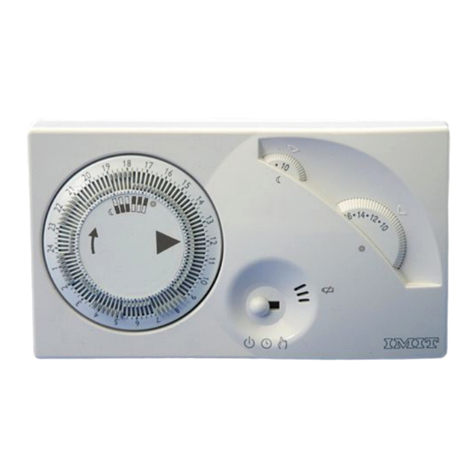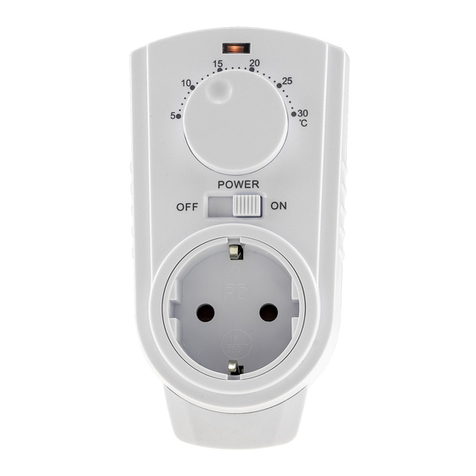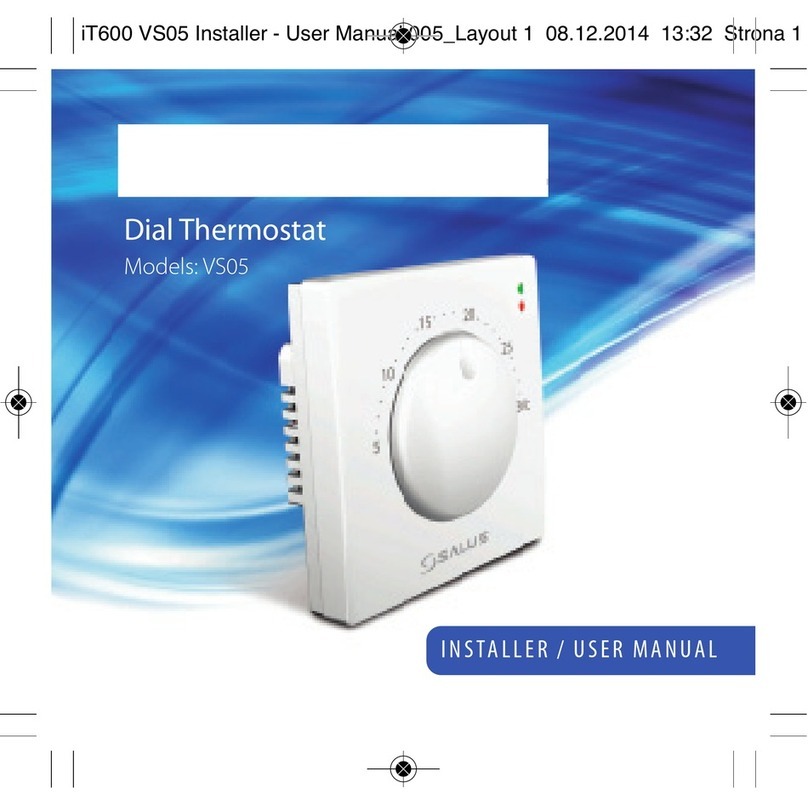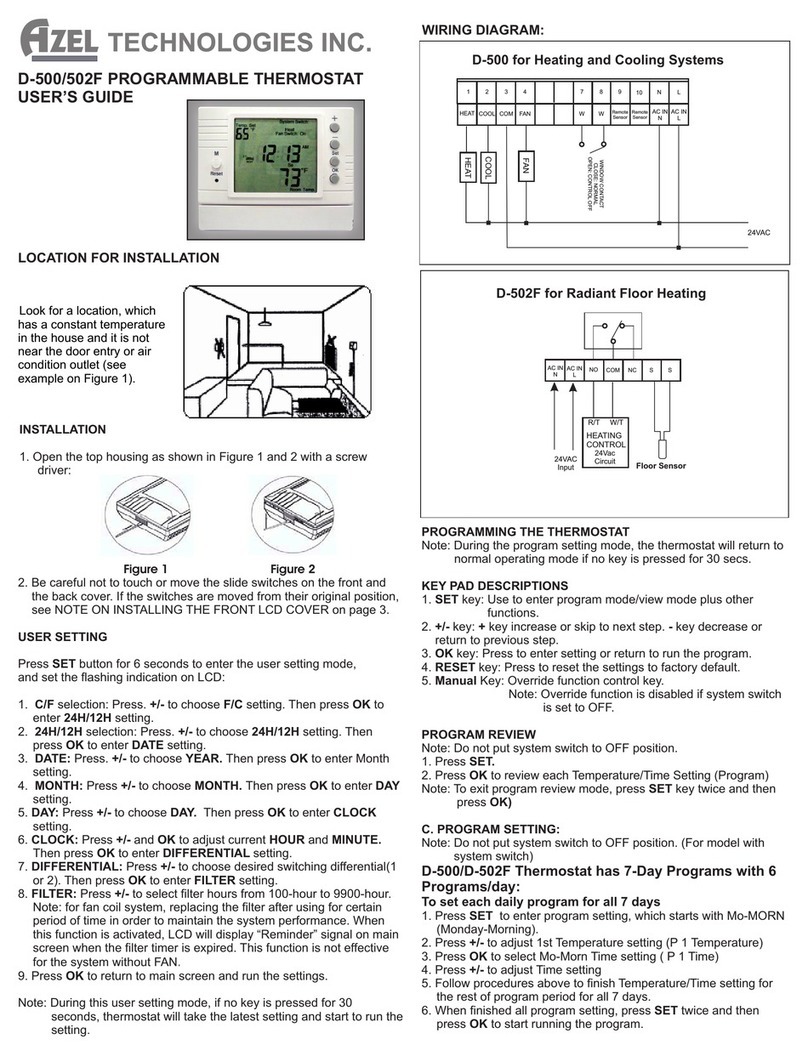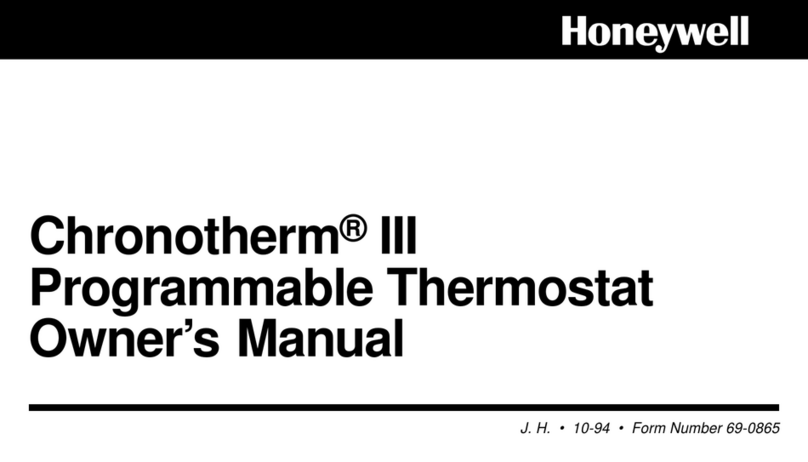Bosch FR 10 User manual
Other Bosch Thermostat manuals

Bosch
Bosch TR 200 User manual
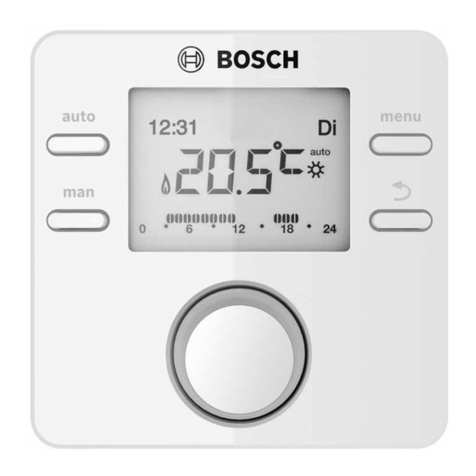
Bosch
Bosch CR 50 User manual
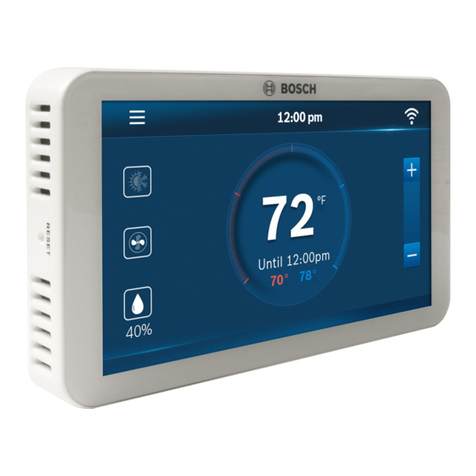
Bosch
Bosch BCC100 User manual

Bosch
Bosch Room thermostat II Operator's manual

Bosch
Bosch Worcester Greenstar Comfort II RF User manual
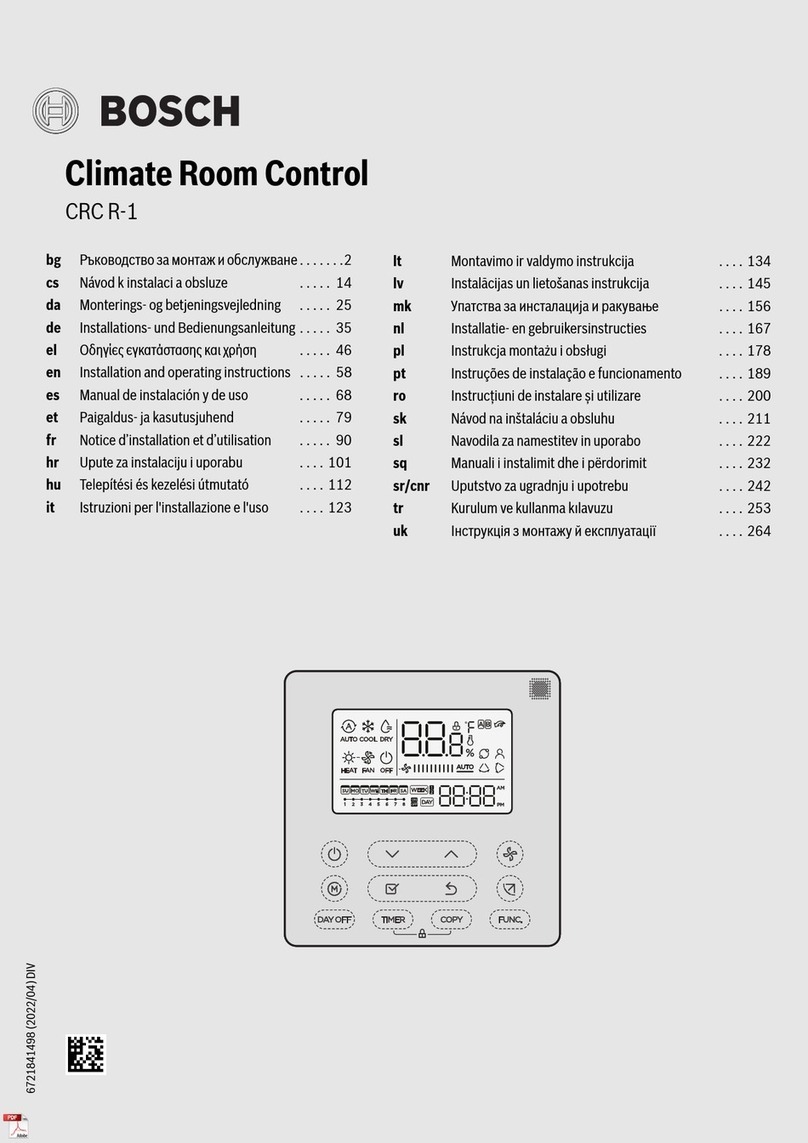
Bosch
Bosch CRC R-1 User manual
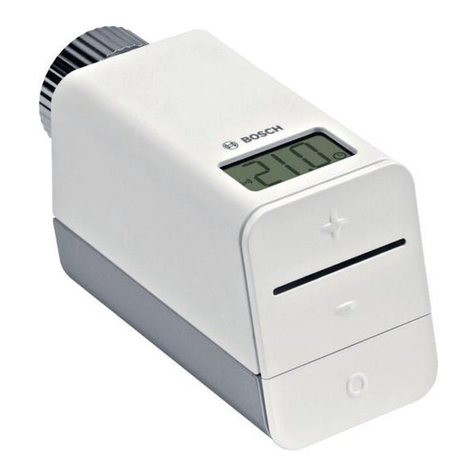
Bosch
Bosch RT10-RF User manual
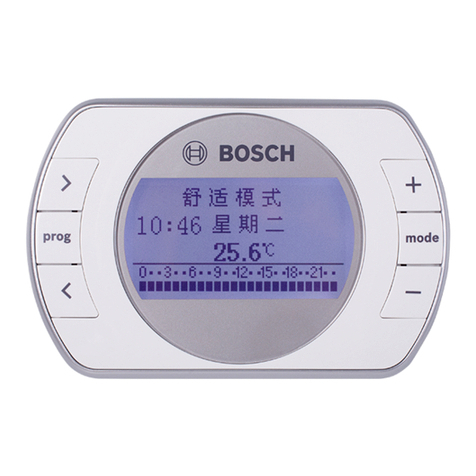
Bosch
Bosch OR80 OT User manual
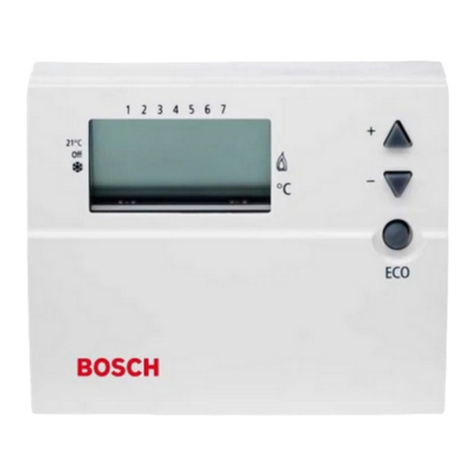
Bosch
Bosch TRZ 12-2 User manual

Bosch
Bosch Smart Home Thermostat AA User manual

Bosch
Bosch BCC100 User manual
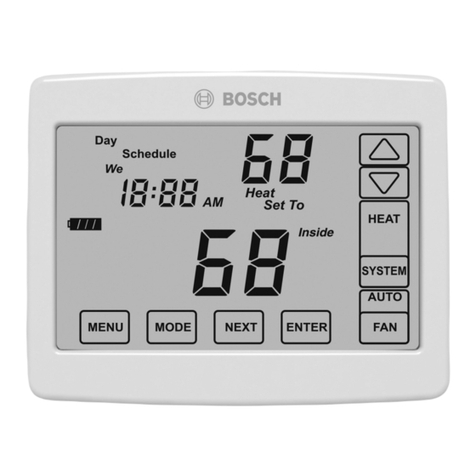
Bosch
Bosch TSTBT4H2CP-M--A User manual
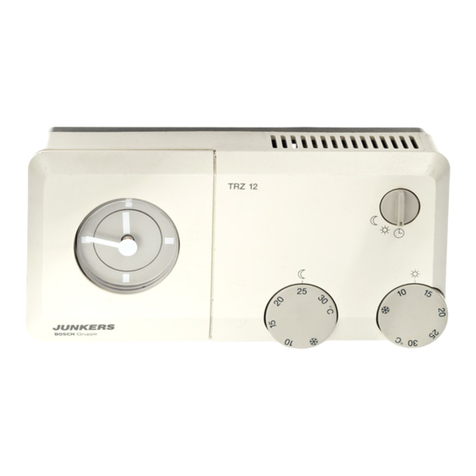
Bosch
Bosch TRZ 12 T User manual

Bosch
Bosch Room thermostat II 230 V Operator's manual

Bosch
Bosch Climate 5000 Series User manual
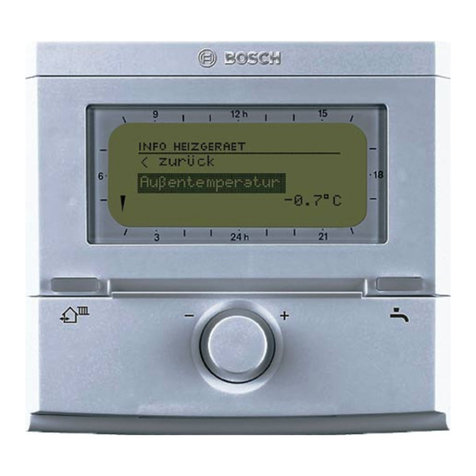
Bosch
Bosch FW 100 User manual

Bosch
Bosch BCC100 Service manual
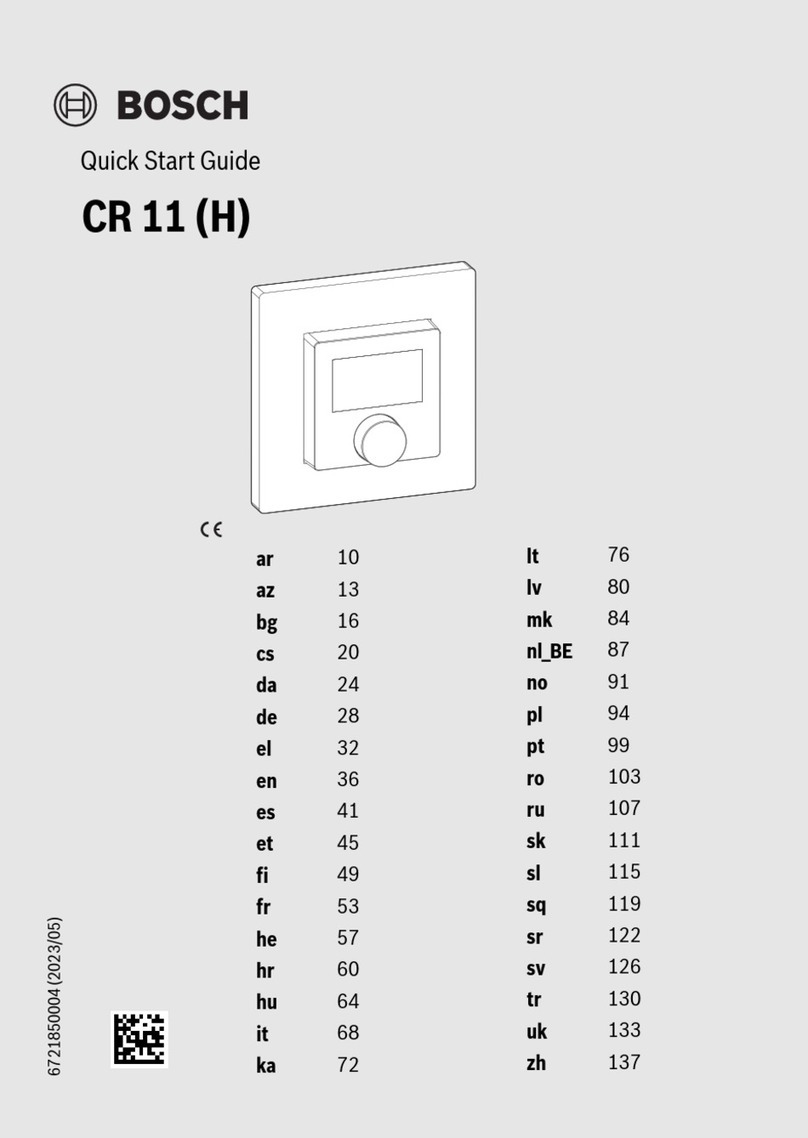
Bosch
Bosch CR 11 User manual
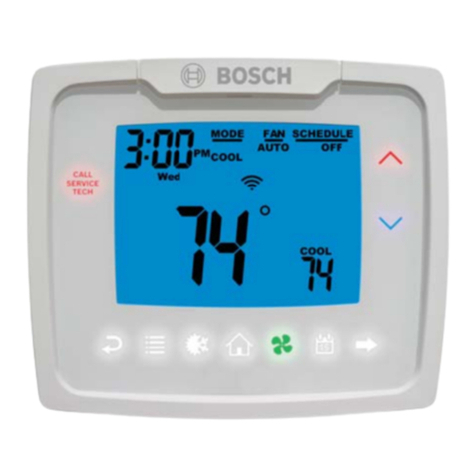
Bosch
Bosch 3H/2C Guide

Bosch
Bosch OR30 OT User manual
Popular Thermostat manuals by other brands

Charmeg
Charmeg MP-R user manual
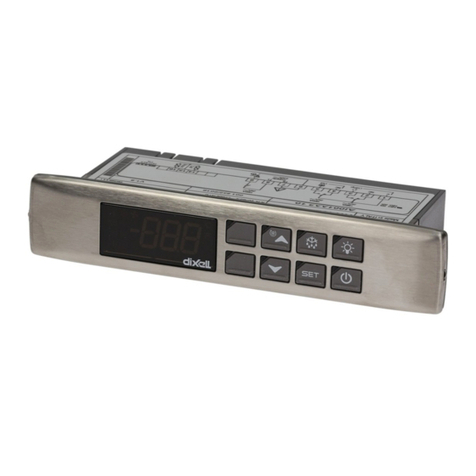
dixell
dixell WING XW40LS Installing and operating instructions
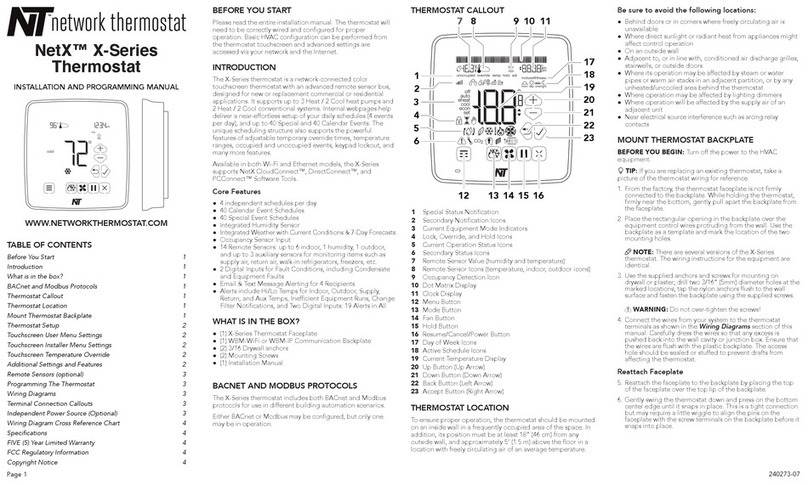
Network Thermostat
Network Thermostat NetX X7C-WIFI Installation and programming manual
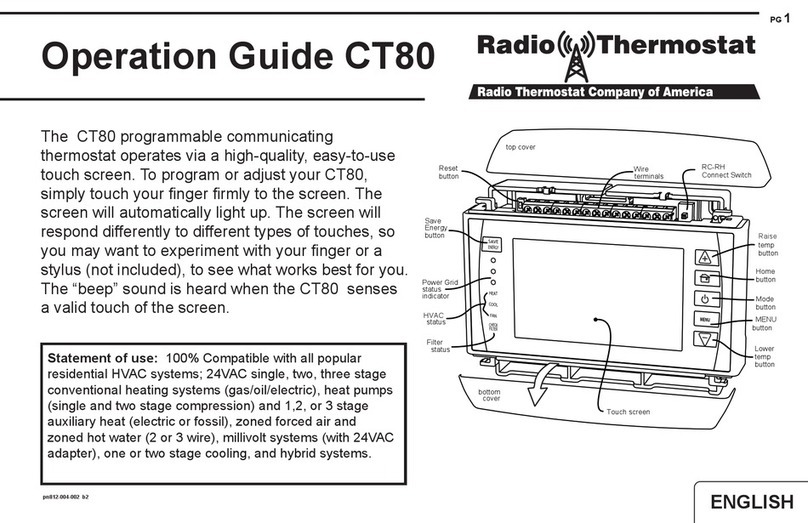
Radio Thermostat
Radio Thermostat CT80 Operation guide

HAI
HAI Omnistat RC-120 installation manual
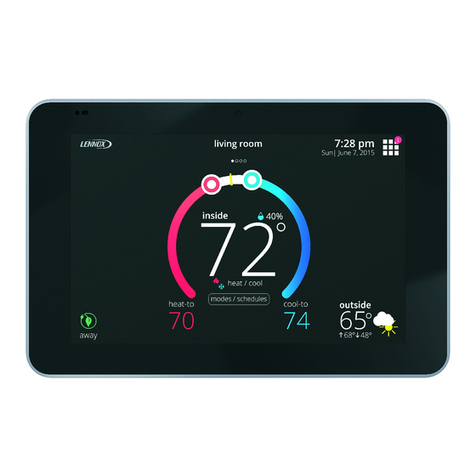
Lennox
Lennox iComfort E30 Installation and setup guide

Lux Products
Lux Products PSD011Ba Installation and operating instructions
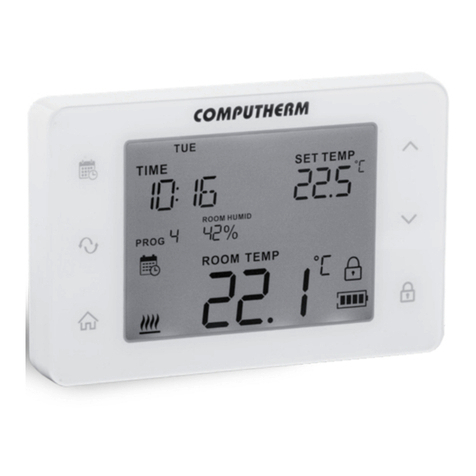
Computherm
Computherm Q20 operating instructions
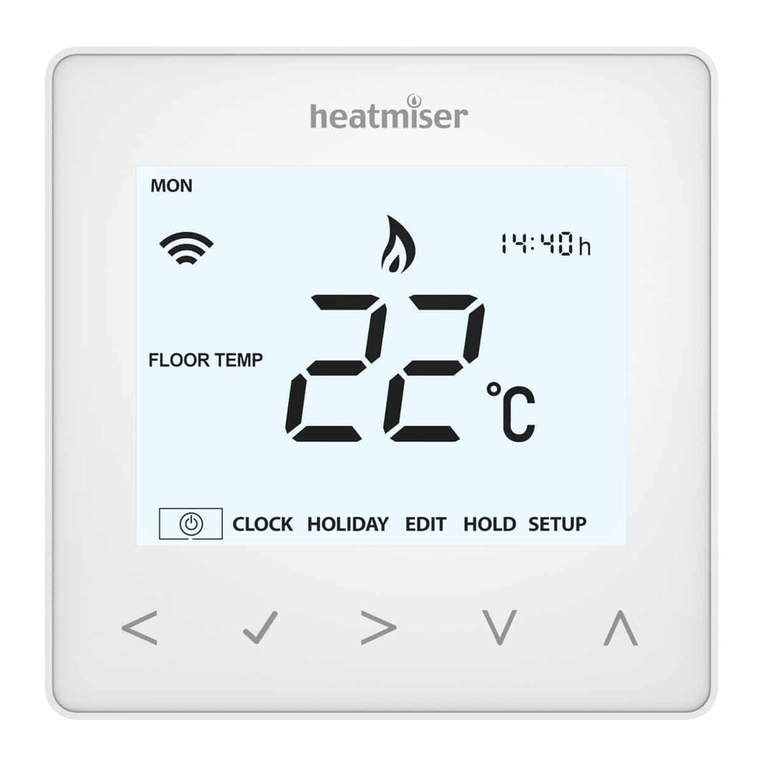
Heatmiser
Heatmiser neoStat user manual
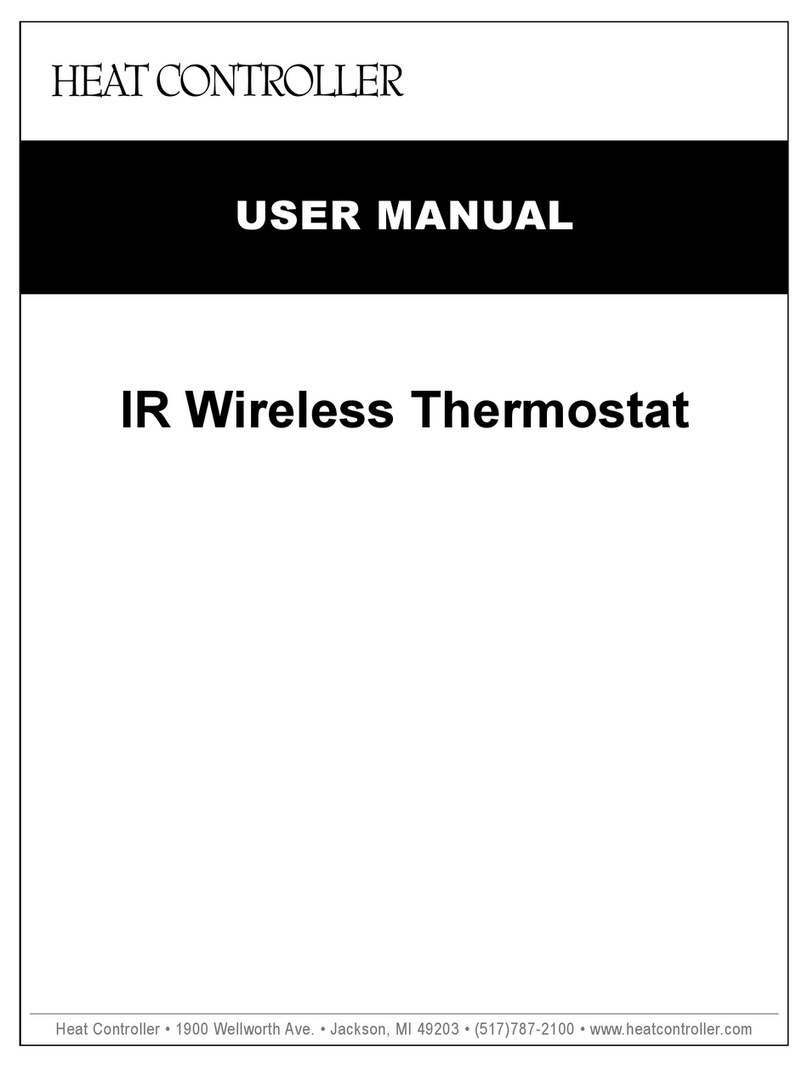
Mars
Mars HEAT CONTROLLER IR Wireless Thermostat user manual

LUX
LUX LP0511D user manual
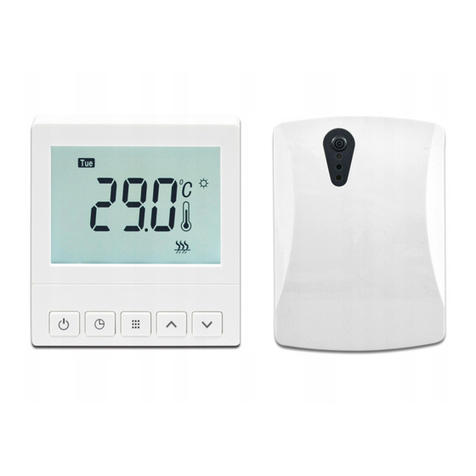
Saswell
Saswell SAS920XWHB-7-S-RF User manual and warranty card



